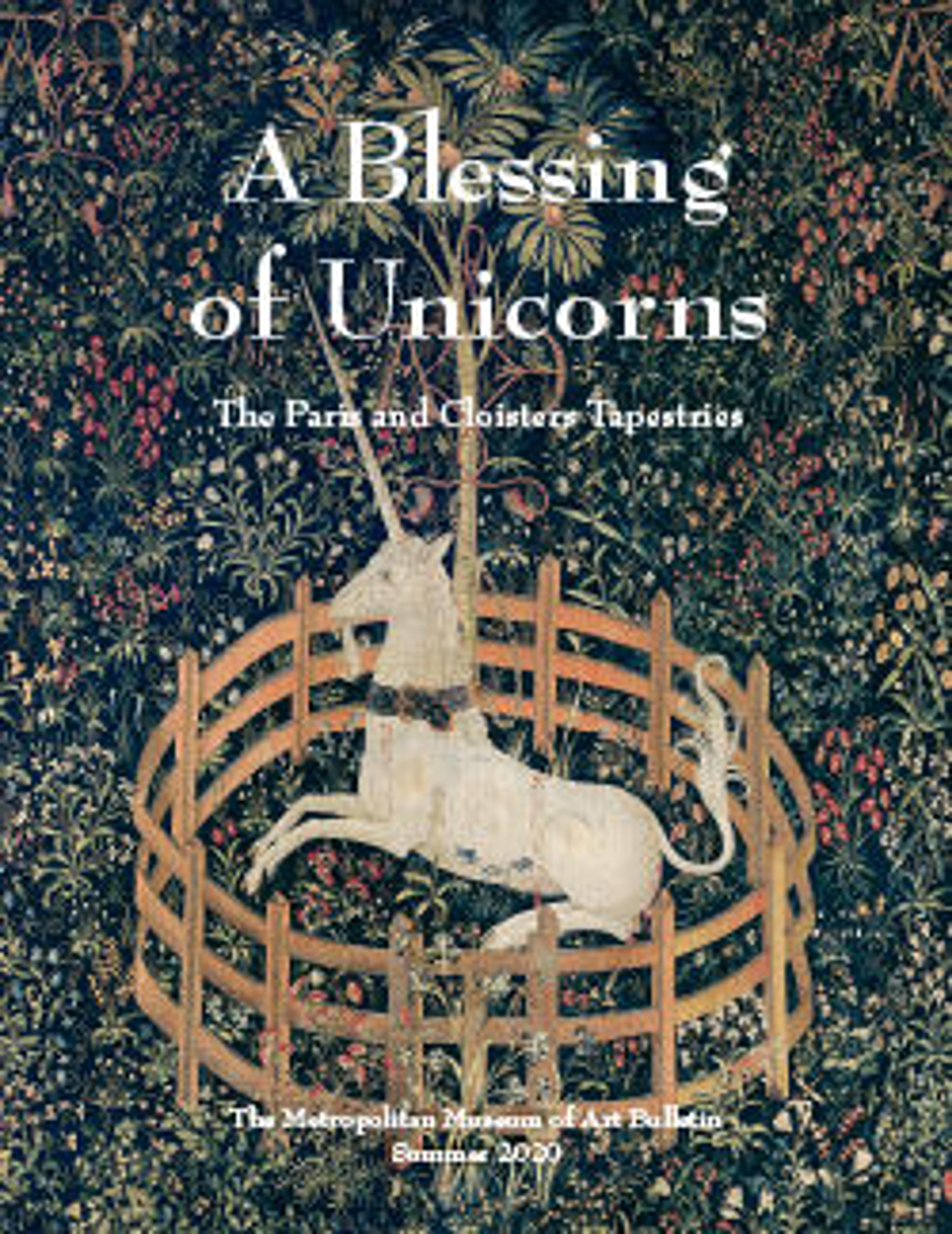The Unicorn Crosses a Stream (from the Unicorn Tapestries)
The use of hounds to scout, chase, and eventually attack the quarry was typical practice in medieval stag hunts, and the palatial buildings in the background might be a further allusion to the hunt as a royal or aristocratic pastime. Unlike The Hunters Enter the Woods and The Unicorn in Captivity, this and the other hangings are set in realistic landscapes that enhance the drama of the hunt.
Artwork Details
- Title:The Unicorn Crosses a Stream (from the Unicorn Tapestries)
- Date:1495–1505
- Geography:Made in Paris, France (cartoon); Made in Southern Netherlands (woven)
- Culture:French (cartoon)/South Netherlandish (woven)
- Medium:Wool warp with wool, silk, silver, and gilt wefts
- Dimensions:Overall: 145 x 168in. (368.3 x 426.7cm)
- Classification:Textiles-Tapestries
- Credit Line:Gift of John D. Rockefeller Jr., 1937
- Object Number:37.80.3
- Curatorial Department: Medieval Art and The Cloisters
Audio
65. The Unicorn Is Attacked (from the Unicorn Tapestries)
Gallery 17
NARRATOR: A battle unfolds here. Ten hunters pursue the unicorn with their weapons and dogs, while the unicorn tries to escape by jumping across a stream. The intensity of the drama is so vivid that it is almost audible: hunters blowing their horns or releasing their dogs, birds flapping wings along the lower border, and the many lances converging on the unicorn. The cipher A & E is again prominently displayed at the four corners and on the oak tree at the center. But it is only on this tapestry that we find a different cipher, one consisting of the letters F and R tied with a similar knot. The letters F and R are probably those of François de La Rochefoucauld, a member of an aristocratic family whose roots can be traced back to the latter part of the 15th century. In 1680, at the death of François VI de La Rochefoucauld, an inventory was taken of his property in Paris, mentioning the tapestries for the first time. While it is unclear as to which François acquired these tapestries, they remained in the family until the 1920s, when the six large ones were sold to John D. Rockefeller, Jr. who, in turn, gave them to The Cloisters. You might want to look at the narwhal tusk standing between the tapestry and the limestone fireplace. The narwhal is a small whale living in the Arctic. The tusk grows on the upper jaw of the male, and is distinguished by the spiral twist on the surface as is often seen in depictions of unicorns. Narwhal tusks were introduced in Europe in the late 11th century and were soon believed to be unicorn horns. The next stop is on the opposite side of the fireplace.
More Artwork
Research Resources
The Met provides unparalleled resources for research and welcomes an international community of students and scholars. The Met's Open Access API is where creators and researchers can connect to the The Met collection. Open Access data and public domain images are available for unrestricted commercial and noncommercial use without permission or fee.
To request images under copyright and other restrictions, please use this Image Request form.
Feedback
We continue to research and examine historical and cultural context for objects in The Met collection. If you have comments or questions about this object record, please contact us using the form below. The Museum looks forward to receiving your comments.
